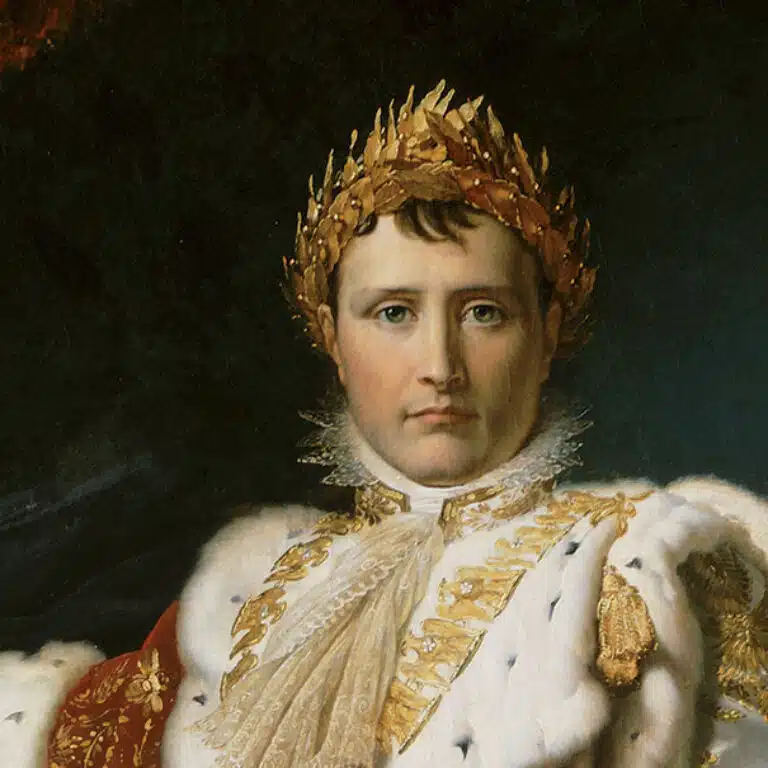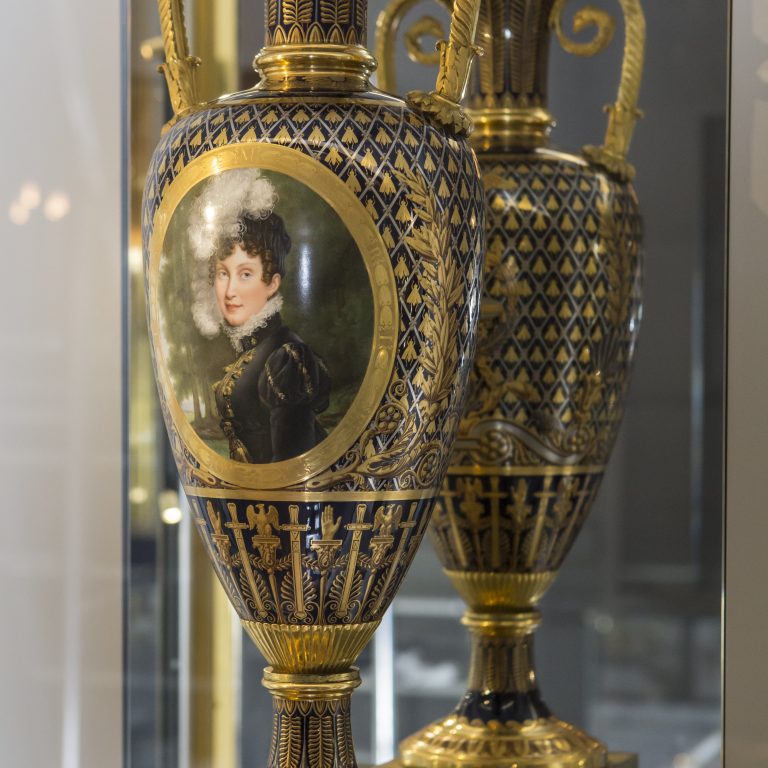
Napoleon I and his grip over Europe
From the iconic ceremonial portrait of Napoleon I in his coronation robes, painted by François Gérard in 1805, to the gallery of portraits of the Emperor’s siblings depicted as kings and queens of the European States which he granted them, the museum explains how Napoleon I, Emperor of the French and King of Italy gained domination, and the machinations of power by which ruled over his Empire.
The splendour of the Imperial table
The dining table, a showcase of power since the Ancien Régime, became an opportunity for the Emperor to display the pomp and ceremony of his regime by reviving the traditions of the monarchy. Following the codes of the former monarchy, the Emperor resurrected, for his marriage to Marie-Louise on 1 April 1810, the "grand couvert" or formal meal where royal etiquette was followed around a table set with the grand vermeil service. Some exceptional pieces of this service are displayed in the showcases.


The decorative arts and the Empire
Hoping to stabilise the French economy with the creation of the "Franc Germinal," Napoleon I revived the large French factories to supply his European empire, such as the Sèvres porcelain factory, which became a showcase of French excellence in Europe. Private companies and factories become suppliers to the Imperial family and Paris became the "luxury” capital, teeming with artistic treasures displayed in homes.
Napoleon and Marie-Louise
How to establish a fourth French dynasty without an heir? While Joséphine de Beauharnais features in the first room with the sumptuous Portrait by François Gérard, it is the Emperor’s second wife, the young Austrian Princess Marie-Louise, who is given pride of place in the museum. Forced to divorce of his first wife in 1809, Napoleon experienced the dizzy heights of power by making an alliance, in 1810, with one of the oldest reigning royal families in Europe: the Habsburgs.


The heir to the Empire
The elm cradle by Thomire-Duterme, which was in the bedroom at the Tuileries Palace, as well as the paintings of Napoleon I's son and the collection of toys given to the child to further his education, give us an insight into Napoleon Joseph Charles, born at the Tuileries Palace on 20 March 1811 after a difficult birth for Marie-Louise. Even though, before he was even born, he was given the title of "King of Rome", the child destined to become Napoleon II would never reign. The penultimate room in the museum explains what happened to him after the fall of the Empire.
The fall of the Empire and the Farewell at Fontainebleau
In 1814, the invasion of France by the Allied Powers and the capitulation of Paris in March, forced Napoleon to take refuge at Fontainebleau and sign his abdication there. Having lost everything, all that remained for him to do was stage his farewell and his departure for Elba, after a memorable descent of the Horseshoe staircase he had climbed so enthusiastically ten years earlier. An evocative image of the birth of the Napoleonic legend, presenting him as Prometheus wandering on the rocks of Saint Helena, concludes the story of this anonymous Corsican soldier who, thanks to the Revolution, became the ruler of Europe.
